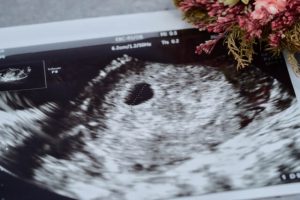Summary of this article
Postpartum body recovery should ideally begin around 2 to 3 months after childbirth. The postpartum recovery period of the first month is crucial for resting and allowing the body to recuperate. The sagging skin of the abdomen and the widened pelvis, caused by pregnancy, gradually return to their pre-pregnancy state after childbirth. By implementing measures for body recovery during this period, you can help restore your body shape.
- Introduction
- Changes in Body Shape During Early Pregnancy
- Changes in Body Shape During Mid-Pregnancy
- Changes in Body Shape During Late Pregnancy
- Changes in Body Shape After Childbirth
- Ways to Restore Body Shape and Effectiveness
- Conclusion
- FAQs About Postpartum Body Shape Restoration
Introduction
During pregnancy, the body undergoes significant changes to accommodate the growing baby, and many individuals struggle with postpartum weight gain and other body changes that don’t revert to pre-pregnancy state.
By understanding in advance the body shape changes that occur during and after pregnancy, as well as strategies for restoring one’s pre-pregnancy body shape, individuals can better cope with the postpartum period. Let’s explore these topics on this page.

Changes in Body Shape During Early Pregnancy
The period up to 13 weeks and 6 days of pregnancy is referred to as the early stage of pregnancy.
During this time, the fetus is still small, so the size of the abdomen may not be very noticeable. However, the uterus enlarges, and the amount of amniotic fluid increases, leading to gradual weight gain.
Due to increased secretion of female hormones, there may be changes such as breast tenderness, swelling, or enlargement, as the development of mammary glands is stimulated.
Additionally, pregnancy leads to increased secretion of a hormone called relaxin, which causes the pelvis to widen. This may result in a feeling of enlargement in the buttocks.
NIPT (Non-Invasive Prenatal Testing) Can Be Done in Early Pregnancy
The early stages of pregnancy often bring about anxieties regarding the baby’s well-being. During such times, one option is to consider prenatal screening.
Among the various prenatal screening methods available, NIPT stands out for its ability to be conducted early on as soon as pregnancy is confirmed via ultrasound.
Since NIPT involves a simple blood test, it carries no risks of miscarriage or stillbirth. Moreover, it offers a high accuracy rate of 99.9% for detecting trisomy 21 (Down syndrome).
For those eager to learn more about their baby’s health or experiencing anxieties, considering NIPT might be worth exploring.
Changes in Body Shape During Mid-Pregnancy
The period from 14 weeks and 0 days to 27 weeks and 6 days of pregnancy is referred to as the mid-term or second trimester.
During this period, the abdomen becomes more noticeable, and there is an increase in weight gain.
Additionally, preparations for breastfeeding begin in the body, leading to breast tenderness or enlargement. It’s common to experience discomfort with regular bras.
As relaxin is secreted, the pelvis starts to widen in preparation for childbirth, which can also contribute to a feeling of enlargement in the buttocks.
Stretch Marks
Stretch marks, or striae gravidarum, refer to the lines or streaks that appear on the skin due to rapid changes in body shape during pregnancy. These lines occur when the skin is stretched, and they may begin to appear as early as the mid-term of pregnancy in some individuals.
Changes in Body Shape During Late Pregnancy
The period from 28 weeks onward is referred to as the late stages of pregnancy.
During this time, the abdomen significantly enlarges, making it visibly apparent that the individual is pregnant. There is also a considerable increase in body weight.
As childbirth approaches, the pelvis begins to expand, contributing to the enlargement of the buttocks.
At this stage, preparations for breastfeeding progress further, causing the breasts to become even larger. Consequently, many individuals find that their bra size changes. Additionally, secretion of a substance called colostrum may start to occur from the nipples.
Changes in Body Shape After Childbirth
After childbirth, the subcutaneous fat accumulated during pregnancy doesn’t immediately disappear, and it’s common for weight to remain higher than pre-pregnancy levels. Many individuals also experience concerns about loose skin on the abdomen.
When can one expect to return to their pre-pregnancy body shape?
Due to the widening of the pelvis during childbirth, it’s common for the buttocks to also appear larger. Generally, the pelvis gradually returns to its original position over a period of approximately 3 to 4 months postpartum.
The sagging of the abdominal skin typically takes about six months to return to its original state. On the other hand, breasts often become even larger due to breastfeeding.
Ways to Restore Body Shape and Effectiveness
When Should You Start Restoring Your Body Shape After Childbirth?
When is it best to start restoring your body shape after childbirth? The postpartum period of one month is crucial for allowing the body to recover, so it’s important to rest properly. It’s recommended to start the process of restoring your body shape around 2 to 3 months after childbirth.
Can You Restore Your Body Shape Yourself?
The sagging of the skin around the abdomen and the widened pelvis due to pregnancy gradually return to their original state after childbirth. During this period, you can assist in restoring your body shape by implementing various self-care measures.
One effective method for restoring your body shape is to use a pelvic belt worn around the pelvic area. It’s recommended to inquire about these belts at the hospital where you gave birth, as they may be available for purchase there.
Additionally, once you have sufficiently recovered your strength after the postpartum period, starting exercises such as strength training can be beneficial. However, it’s important to avoid excessive dietary restrictions as they may affect breastfeeding.
Caution Regarding the Timing of Starting After Cesarean Section
If you have had a cesarean section delivery, when should you start postpartum recovery?
For those who have undergone a cesarean section delivery, the recovery period may be longer and the physical strain on the body may be greater compared to vaginal delivery. It’s advisable to take a rest and avoid overexertion for about 1 to 2 months after childbirth to allow your body to recover properly.
Treatment for Postpartum Body Shape Distortion
Pelvic Opening
Where Can Treatment Be Done?
When you’re concerned about postpartum pelvic misalignment, you can receive treatment at a chiropractic clinic, orthopedic clinic, or with a bodywork therapist.
Are There Effective Treatment Methods?
Many facilities that offer postpartum pelvic correction provide specialized menus tailored for postpartum individuals.
Cost of Treatment for Body Shape Distortion
Postpartum pelvic correction is not covered by insurance as it is not considered a traumatic injury. Because insurance does not cover it, the cost may vary depending on the facility.
Is Treatment Covered by Insurance if Body Shape Distortion Is Severe?
In chiropractic clinics or orthopedic clinics, insurance coverage is not applicable unless it is due to traumatic injury. It’s advisable to expect out-of-pocket expenses, even in cases of severe body misalignment.

Pubic Symphysis Separation
Where Can Treatment Be Done?
During childbirth, intense pushing or sudden contractions can exert excessive pressure on the pubic symphysis, causing it to separate more than necessary. This condition is known as pubic symphysis diastasis.
Pubic symphysis diastasis can be treated at chiropractic clinics, orthopedic clinics, or through osteopathic therapy. However, in severe cases, surgery may be performed by an orthopedic surgeon.
Are There Effective Treatment Methods?
If symptoms do not improve after receiving treatment at chiropractic clinics, orthopedic clinics, or through osteopathic therapy, it may be advisable to consider surgery at an orthopedic surgery clinic.
Cost of Treatment for Body Shape Distortion
Treatment at chiropractic clinics, orthopedic clinics, and through osteopathic therapy is not covered by insurance, so the cost may vary depending on the facility.
Is Treatment Covered by Insurance if Body Shape Distortion Is Severe?
When the pain from pubic symphysis separation is severe, surgery can be performed at a hospital. This surgery is covered by insurance.
Conclusion
Here’s an explanation of the changes in a pregnant woman’s body and measures to restore her body shape after childbirth. A pregnant woman’s body undergoes significant changes in preparation for childbirth. It’s common for many women to feel anxious because their body doesn’t immediately return to its pre-pregnancy state after childbirth. However, it’s crucial to rest well during the postpartum period to allow the body to recover.
Once the postpartum recovery period has passed and your strength has returned, starting exercises like strength training can be beneficial. If you’re still worried about regaining your pre-pregnancy body shape, you can consider receiving treatment at a chiropractic clinic or an orthopedic clinic. Since the body is delicate after childbirth, it’s important to proceed with caution and avoid overexertion.
【References】
- General Incorporated Association Kanto Federation of Obstetrics and Gynecology Secretariat – Information on Pubic Symphysis Diastasis during Delivery and Surgical Cases
Q&A
FAQs About Postpartum Body Shape Recovery
-
QIs it true that you lose weight by breastfeeding?Breast milk is produced from the nutrients taken by the mother, so breastfeeding can help mothers regain their pre-pregnancy body shape.
During the first one or two months after birth, the amount of breast milk consumed by the baby is not very high, but as the baby grows, the amount increases.
While busy taking care of the baby and breastfeeding, it is not uncommon for mothers to find that their body shape has returned without them even noticing.
Article Editorial Supervisor

Dr Hiroshi Oka
NIPT specialist clinic, MD
Graduated from Keio University, School of Medicine
 中文
中文





















